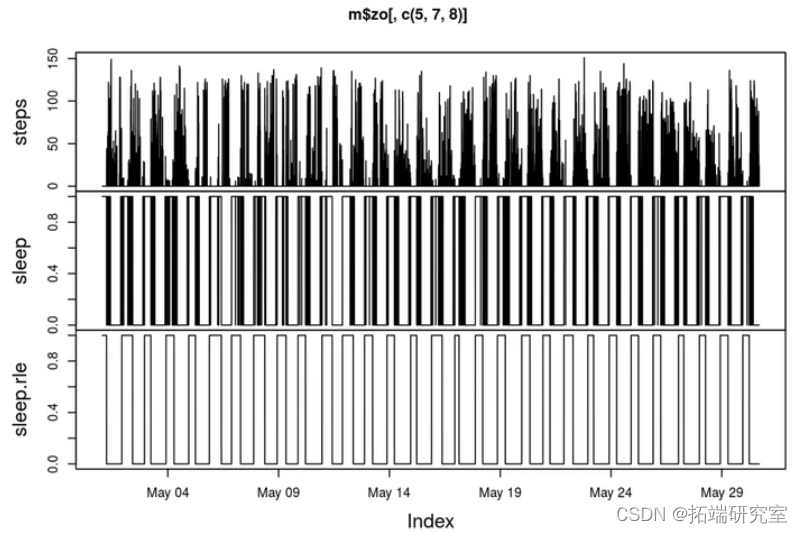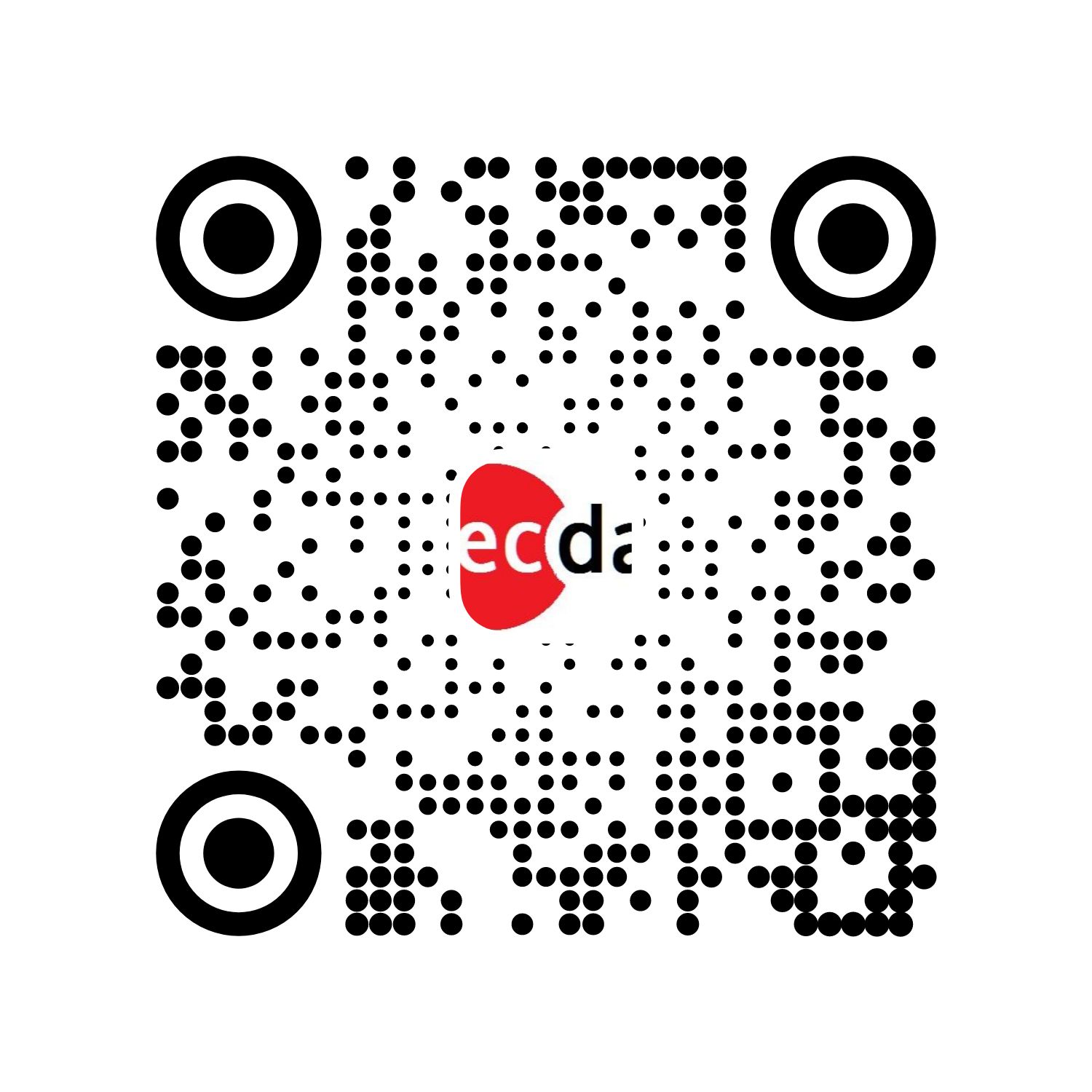
下面显示了四种预测时间序列的方法。
支持向量机(R package e1071。“Chih-Chung Chang and Chih-Jen Lin,LIBSVM:a library for support vector machines,2005.”的实现)。
递归分区(R package rpart。“Breiman,Friedman,Olshen and Stone。Classification and Regression Trees,1984”的实现)。
将最后两种方法的性能与rle进行比较,得到svm的95%和rpart的94%。
# Apply rle (forward and backward) and a condition: lenght time for sleep changes of 1h m$rle(Xvar ='sleep',Xlmin =60)m$setZoo()# Show differences between conditional and conditional + rleplot(m$zo[,c(5,7,8)],type ='l')

# Subset a week

# Plot correlation matrix
w$correlation(Xvars =w$nm[c(2:7,9)])

# SVM and Recursive partitioning
plot(tune.gamma.cost)

rpart.p <- predict(rpart.m, data[,-1],type ='class')# Resultsdt$svm = as.integer(svm.p)dt$rpart = as.integer(rpart.p)plot(w$dt2zoo(dt)[,c(5,8,9,10)],type ='l')

可下载资源
关于作者
Kaizong Ye是拓端研究室(TRL)的研究员。在此对他对本文所作的贡献表示诚挚感谢,他在上海财经大学完成了统计学专业的硕士学位,专注人工智能领域。擅长Python.Matlab仿真、视觉处理、神经网络、数据分析。
本文借鉴了作者最近为《R语言数据分析挖掘必知必会 》课堂做的准备。
非常感谢您阅读本文,如需帮助请联系我们!

 Python实现Transformer神经网络时间序列模型可视化分析商超蔬菜销售数据筛选高销量单品预测|附代码数据
Python实现Transformer神经网络时间序列模型可视化分析商超蔬菜销售数据筛选高销量单品预测|附代码数据 Python银行客户数据流失预测SMOTE平衡数据实现神经网络、SVM、决策树、随机森林与超参数调优|附代码数据
Python银行客户数据流失预测SMOTE平衡数据实现神经网络、SVM、决策树、随机森林与超参数调优|附代码数据 Python主题建模、情感分析酒店评论、工商银行手机APP用户评论:MLP、LSTM、CNN、LDA、SVM、随机森林、朴素贝叶斯
Python主题建模、情感分析酒店评论、工商银行手机APP用户评论:MLP、LSTM、CNN、LDA、SVM、随机森林、朴素贝叶斯



